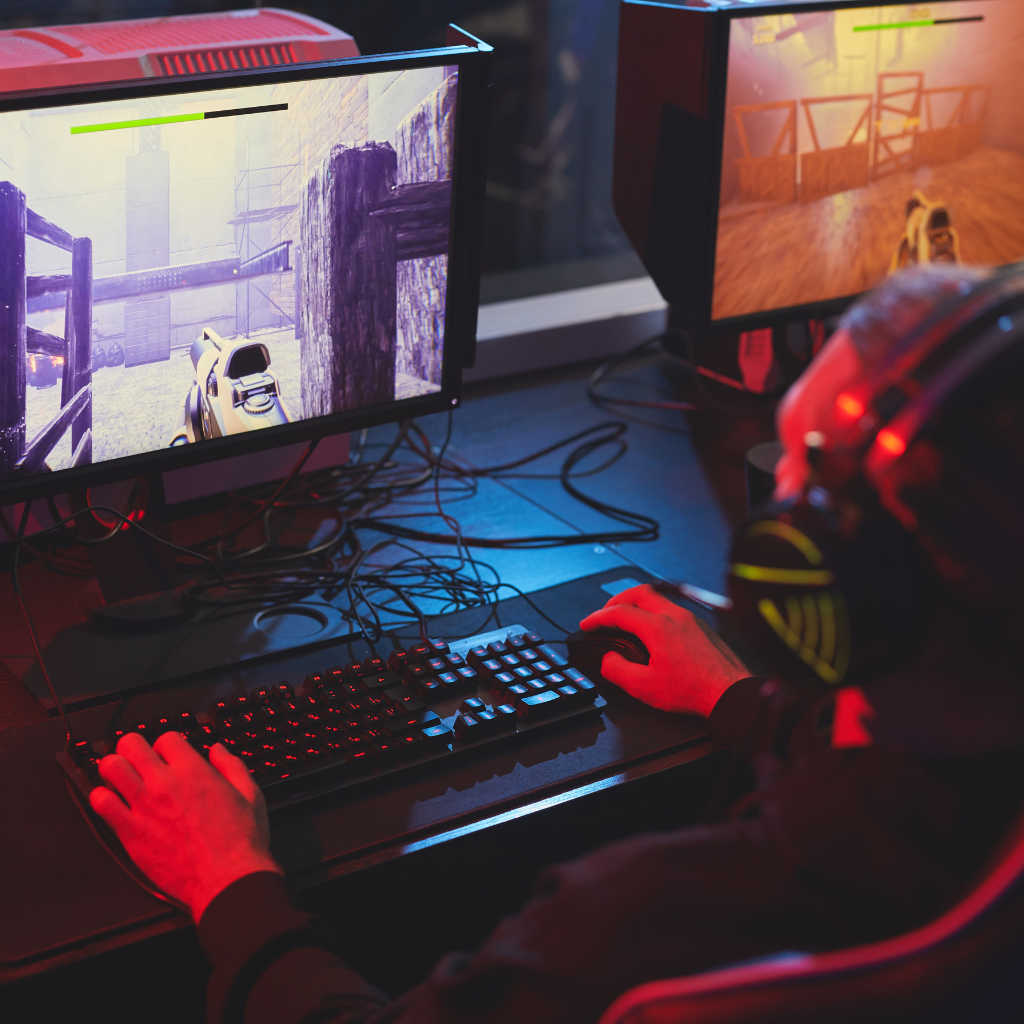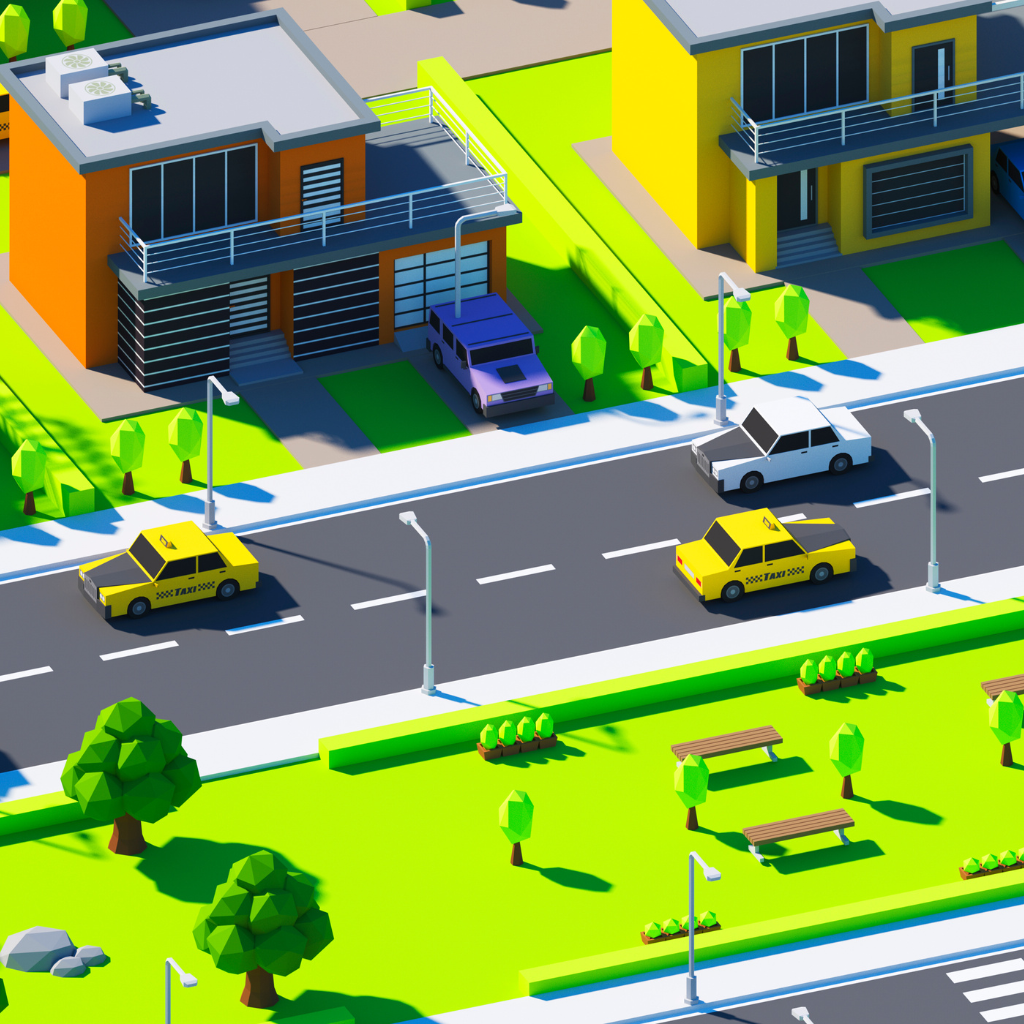
Creating Experiences that Captivate and Connect
For me, game design isn’t just about creating fun mechanics or beautiful graphics—it’s about crafting immersive worlds and experiences that resonate with players on a deeper level. As a lifelong gamer and passionate designer, I believe that games have the power to evoke emotions, spark imagination, and build lasting connections between players and the worlds they inhabit. My goal is to create games that are not only entertaining but that stay with players long after they’ve put down the controller.
With over two decades of experience in UX, UI, and research, my approach to game design is rooted in empathy and player-centered thinking. I bring the same principles I use in product design—understanding the needs, motivations, and challenges of users—into the world of games. Whether I’m designing a fast-paced action game or a story-driven experience, I start by asking one crucial question: What does the player need to feel? From that foundation, I build games that challenge, reward, and keep players coming back for more.
As a design generalist, I leverage my broad skill set to blend creativity with strategy, combining game mechanics, narrative design, and user experience principles into one cohesive experience. My diverse background allows me to approach game design from multiple angles—ensuring that every element, from gameplay systems to level design, serves to create a memorable and engaging player journey.
In this section, you’ll learn about my game design process, how I craft experiences that captivate players, and how my approach ensures that every game I create is not just fun but meaningful.
The Stages of My Game Design Process
Designing games is about more than just mechanics—it’s about crafting entire experiences that resonate with players on an emotional level, keep them engaged, and offer just the right balance of fun and challenge. My game design process is structured to ensure that every aspect of the player’s journey is carefully considered, tested, and refined. From understanding player motivations to designing engaging gameplay mechanics, every stage of my process is built around creating experiences that players will love and remember.
1. Understanding Player Motivations
The heart of any great game lies in its players. The first stage of my design process is deeply rooted in understanding who the players are, what motivates them, and what keeps them engaged. Before any design decisions are made, I conduct player research to understand what players want to experience when they play, how they engage with different types of games, and what emotions they seek to evoke.
Player Research: I use a combination of qualitative methods, such as interviews and surveys, to dive deep into player psychology. I ask questions like: What draws players to certain games? What makes them stay? What types of challenges excite them, and what frustrates them? By understanding these core motivations, I can design games that cater to their needs and desires.
Player Personas: Based on my research, I develop detailed player personas that represent different segments of the gaming audience. These personas help me tailor game mechanics, narratives, and difficulty levels to meet the expectations of various player types, whether they’re casual gamers or hardcore enthusiasts.
Real-World Example: At Jaguar Games, I conducted player research to understand what drove engagement in our target audience. This research revealed that players craved a balance between strategy and action, and this insight directly influenced the core mechanics we designed for the game.
2. Designing the Core Game Mechanics
Once I have a clear understanding of who the players are and what motivates them, I move on to designing the core mechanics of the game. These mechanics form the foundation of the gameplay experience, defining how players interact with the game world and what actions they can take. My approach to mechanics is to create systems that are both engaging and intuitive, offering depth for more experienced players while remaining accessible to newcomers.
Brainstorming & Ideation: In this phase, I explore a wide range of potential mechanics through brainstorming sessions, sketching out different gameplay ideas, and imagining how these mechanics will influence player experience. I focus on creating systems that are fun and rewarding, but also support the game’s overall vision and objectives.
Balancing Simplicity with Depth: The best games are easy to learn but hard to master. When designing mechanics, I strive to find a balance between simplicity and complexity—allowing players to quickly grasp the basics while offering enough depth for them to continue learning and improving as they play. This helps sustain long-term engagement.
Real-World Example: In one of my Unity demo games, I designed a set of core mechanics inspired by classic arcade platformers. These mechanics were simple enough for players to pick up quickly but had hidden layers of depth through advanced moves and combinations that kept players challenged as they progressed.
3. Building Engaging Player Experiences
Once the core mechanics are in place, it’s time to build the player experience around them. This involves crafting user flows, designing levels, and creating narratives that draw players into the game world and keep them hooked. Every part of the player’s journey—from their first interaction with the game to their final moments—needs to feel engaging, intuitive, and rewarding.
User Flow & Level Design: I design player flows that guide users through the game in a way that feels natural and progressive. Levels are carefully crafted to introduce new challenges at the right pace, ensuring that players are always learning, growing, and feeling a sense of accomplishment. By balancing the difficulty curve, I keep players engaged without overwhelming them.
Narrative Design: For story-driven games, I integrate the narrative seamlessly into the gameplay, ensuring that the story enhances rather than detracts from the player experience. The goal is to create a game world that feels immersive and cohesive, where players can lose themselves in both the gameplay and the story.
Real-World Example: In a narrative-driven game I developed in Godot, I used branching storylines to give players a sense of agency. The story evolved based on the player’s choices, making each playthrough unique and increasing their emotional investment in the game.
4. Prototyping & Iteration
Prototyping is an essential part of the game design process, allowing me to quickly test ideas, gather player feedback, and refine the gameplay experience. I start with low-fidelity prototypes to test core mechanics and progress to more polished iterations as the game takes shape. This stage is highly collaborative, involving continuous testing, feedback, and iteration.
Early Prototyping: I create early-stage prototypes using tools like Unity and Godot to test the basic mechanics and player interactions. These prototypes allow me to experiment with different gameplay systems and quickly identify what works and what doesn’t before investing too much time in detailed development.
Iterative Refinement: Based on player feedback from playtesting, I iterate on the design, fine-tuning mechanics, adjusting difficulty, and improving the overall experience. This feedback loop ensures that the game evolves in response to real player input and results in a more polished final product.
Real-World Example: While developing a puzzle game, I prototyped various levels and puzzles to test with players. Their feedback helped me adjust the difficulty curve and refine the gameplay to ensure that puzzles remained challenging but fair, resulting in a smoother overall experience.
5. Balancing Fun with Challenge
The final stage of my process is finding the right balance between fun and challenge. A great game should be enjoyable while also offering enough difficulty to keep players engaged. If the game is too easy, players lose interest. If it’s too hard, they get frustrated. I use a combination of playtesting and player psychology to strike this balance, ensuring that players feel rewarded for their progress while staying motivated to overcome new challenges.
Challenge Curves: I design games with a carefully plotted challenge curve, introducing new mechanics or increasing difficulty at the right moments to keep players engaged. This curve ensures that players never feel stuck, but are always being pushed just beyond their current skill level—leading to a satisfying sense of progression.
Reward Systems: Players need to feel like their efforts are worth it, which is why I incorporate well-thought-out reward systems. Whether it’s through in-game achievements, visual cues, or narrative rewards, I make sure that players are consistently motivated to keep playing.
Real-World Example: In one of my recent projects, I designed a progression system that adjusted based on player performance. This dynamic challenge ensured that less experienced players could still enjoy the game without frustration, while more advanced players were pushed to their limits, keeping both audiences fully engaged.
How Game Design Informs My Broader Design Practice
Game design is more than just crafting fun experiences—it’s about creating interactive systems that resonate with users on multiple levels. The principles I’ve learned from designing games have profoundly influenced how I approach all aspects of design, whether it’s UX, UI, or product design. Game design requires an understanding of user motivation, engagement, and psychology that translates directly into creating meaningful experiences in any design discipline.
By working in game design, I’ve honed a unique set of skills that allow me to blend creativity, empathy, and strategy in ways that elevate my broader design practice. Here’s how game design informs and strengthens my approach to solving complex problems, creating user-centered solutions, and delivering experiences that engage, inspire, and drive results.
1. Bringing Empathy into All Design
Game design teaches you to put players at the center of every decision, which translates directly into how I approach user-centered design. In games, success is measured not just by the mechanics, but by how well those mechanics align with player motivations, emotions, and behaviors. This focus on empathy—understanding what the player or user needs and wants—carries over into all my design work.
Designing for Emotional Engagement: In game design, it’s crucial to create moments that resonate emotionally with players, whether it’s the excitement of overcoming a challenge or the satisfaction of completing a quest. This ability to design for emotional engagement helps me create user experiences that go beyond functionality, making them memorable and deeply satisfying for users. In product design, this might mean designing a checkout flow that makes users feel confident and reassured or crafting a dashboard that gives users a sense of control and mastery over their tasks.
User-Centered Thinking: Just like in game design, every product, website, or app I design is centered around the user’s journey. Understanding users’ goals, pain points, and desires informs the decisions I make, ensuring that the experience is tailored to their needs and creates value at every touchpoint.
Real-World Example: While leading the redesign of ArmyIgnited, I applied the same empathy-driven design principles I use in games. By focusing on what the students and administrators needed to feel (empowered, in control, and supported), I was able to create an education management system that was not only functional but also engaging and user-friendly, leading to improved satisfaction across the platform.
2. Creating Interactive, Immersive Experiences
One of the key aspects of game design is the ability to create interactive, immersive experiences that draw players in and keep them engaged. This skill translates seamlessly into other design fields, where creating an engaging user experience is just as important. Whether I’m designing a mobile app or an e-commerce website, I use the principles of interactivity and immersion learned from game design to make the experience feel dynamic and enjoyable.
Interactivity as a Core Principle: Games rely on constant interaction between the player and the game world, and I apply this concept to UX design by ensuring that users have a sense of control and agency in their interactions. This means designing interfaces that are intuitive, responsive, and rewarding—whether it’s through smooth navigation, interactive features, or feedback mechanisms that make users feel like they are part of the process.
Immersion Beyond Games: While immersion in games often refers to being lost in a virtual world, the principle applies to other forms of design as well. I aim to create immersive experiences in product design by crafting environments where users feel connected to the system or product. This could be a visually cohesive brand experience or a seamless user flow that eliminates friction and allows users to fully engage with the product.
Real-World Example: When redesigning the Driveway online car-buying experience, I applied game design principles to create an interactive, user-driven process. By allowing users to explore vehicles, customize their purchase, and move seamlessly through the checkout process, I ensured the experience felt immersive and engaging—like they were in control of their car-buying journey.
3. Systems Thinking & Problem-Solving
Game design is inherently about systems thinking—understanding how different elements of a game (mechanics, rules, player actions) interact to create a cohesive experience. This skill translates directly into solving complex design problems across different domains. Whether it’s designing a multi-layered product ecosystem or an intricate user flow, systems thinking helps me see the big picture while also focusing on the smaller, interconnected details.
Creating Cohesive Systems: In both games and product design, you have to think about how different components work together to create a unified experience. I use systems thinking to design products and interfaces where every feature and interaction fits together seamlessly. This ensures that the overall user journey feels fluid and intuitive, from the first interaction to the last.
Complex Problem Solving: Game design often involves solving complex design problems, such as balancing gameplay mechanics or creating engaging challenges. This experience has honed my ability to approach problem-solving in a strategic, analytical way. I apply these skills to product design, where solving user challenges—such as improving usability, simplifying workflows, or optimizing conversion funnels—is just as crucial to success.
Real-World Example: When building the Food Distribution Program (FDP) platform at LINQ, I used systems thinking to design a solution that streamlined communication between state education bodies and school districts. The platform needed to handle complex data flows, user permissions, and reporting tools, and my experience in game design helped me create a cohesive, scalable system that worked seamlessly across multiple stakeholders.
4. Balancing Challenge and Engagement
In game design, finding the right balance between challenge and reward is essential to keeping players engaged. This concept carries over into other forms of design, where you need to strike a balance between ease of use and engagement. A product that’s too simple might fail to engage users, while one that’s too complex can lead to frustration. By applying the principles of game balance, I create designs that challenge users just enough to keep them invested while providing the rewards (e.g., efficient workflows, intuitive tools) that make the experience satisfying.
Gamification Elements: In certain projects, I incorporate gamification—using game-like elements such as points, achievements, or progress tracking to keep users motivated and engaged. This can be especially useful in apps or platforms where maintaining user engagement over time is critical, such as fitness apps, educational tools, or productivity platforms.
Balancing Usability with Engagement: In product design, I apply my understanding of player psychology to balance usability with engagement. For example, I might design features that offer progressive learning, where users unlock new tools or options as they become more familiar with the system, similar to how players progress through levels in a game.
Real-World Example: In a learning management system I designed, I applied gamification principles to create a sense of progression and achievement for users as they completed courses and reached milestones. This approach kept users engaged over time, turning what could have been a standard e-learning platform into an experience that encouraged users to keep returning and progressing.




Game Design for Lasting Player Engagement and Innovation
Game design has given me a unique set of skills that elevate my broader design practice, from crafting emotionally engaging experiences to solving complex problems through systems thinking. Whether I’m designing a game or a product, my goal is the same: to create experiences that resonate with users, keep them engaged, and provide lasting value. By applying the lessons I’ve learned from game design, I’m able to create solutions that are not only functional and beautiful but also immersive and rewarding.
But my approach to game design goes beyond immediate gratification—it’s about building games that create lasting impact. I believe that great games offer more than just a fleeting sense of fun; they provide meaningful experiences that stay with players long after they’ve put down the controller. Whether it’s the satisfaction of solving a difficult puzzle, the thrill of mastering a challenging level, or the emotional connection to a compelling story, my goal is to leave players with something deeper—a sense of achievement, excitement, and wonder.
Ultimately, I see game design as a powerful tool for innovation, one that pushes boundaries and challenges what’s possible in interactive experiences. Whether I’m designing a retro-inspired demo game or collaborating on a large-scale project, my approach remains the same: to create something that players love, that challenges them, and that keeps them coming back for more.
If you’re looking for a designer who understands the art and science of game design—someone who can blend creativity with strategy to deliver engaging, immersive experiences—I’d love to collaborate. Let’s create a game that not only entertains but leaves a lasting impression on players.
